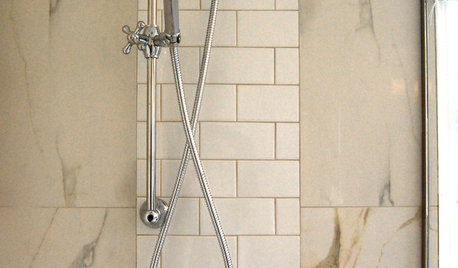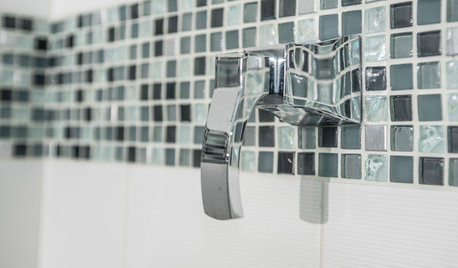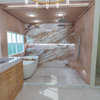grout and caulk questions
lor53
15 years ago
Related Stories

REMODELING GUIDES9 Ways Grout–Yes, Grout–Can Add to Your Design
Choose From a Palette of Grout Colors for a Warm, Unified Look
Full Story
BATHROOM DESIGNConvert Your Tub Space Into a Shower — the Tiling and Grouting Phase
Step 3 in swapping your tub for a sleek new shower: Pick the right tile and test it out, then choose your grout color and type
Full Story
TILE3 Key Steps for Grouting That Looks Its Best
Get your grout right to keep your tile beautiful and for an installation that will last
Full Story
TILEEpoxy vs. Cement Grout — What's the Difference?
Grout is grout, right? Nope. Cement and epoxy versions have different appearances, durability and rules of installation
Full Story
REMODELING GUIDES9 Hard Questions to Ask When Shopping for Stone
Learn all about stone sizes, cracks, color issues and more so problems don't chip away at your design happiness later
Full Story
MOVINGHiring a Home Inspector? Ask These 10 Questions
How to make sure the pro who performs your home inspection is properly qualified and insured, so you can protect your big investment
Full Story
GREEN BUILDINGConsidering Concrete Floors? 3 Green-Minded Questions to Ask
Learn what’s in your concrete and about sustainability to make a healthy choice for your home and the earth
Full Story
SELLING YOUR HOUSE15 Questions to Ask When Interviewing a Real Estate Agent
Here’s what you should find out before selecting an agent to sell your home
Full Story

MOST POPULAR8 Questions to Ask Yourself Before Meeting With Your Designer
Thinking in advance about how you use your space will get your first design consultation off to its best start
Full Story







budge1
bill_vincent
Related Professionals
Buffalo Kitchen & Bathroom Designers · Hammond Kitchen & Bathroom Designers · Terryville Kitchen & Bathroom Designers · New Port Richey East Kitchen & Bathroom Remodelers · Spanish Springs Kitchen & Bathroom Remodelers · Tuckahoe Kitchen & Bathroom Remodelers · Palestine Kitchen & Bathroom Remodelers · Fort Myers Glass & Shower Door Dealers · Kendall Glass & Shower Door Dealers · Victorville Glass & Shower Door Dealers · Del City Window Treatments · El Sobrante Window Treatments · La Vista Window Treatments · Woodridge Window Treatments · Brownsville Window Treatmentslor53Original Author
budge1
yadax3
bill_vincent
lor53Original Author
bill_vincent
lor53Original Author
MariposaTraicionera
bill_vincent
beachmusic
bill_vincent
beachmusic
beachmusic
beachmusic
bill_vincent
beachmusic
bill_vincent
beachmusic
beachmusic
bill_vincent
beachmusic
bill_vincent
beachmusic